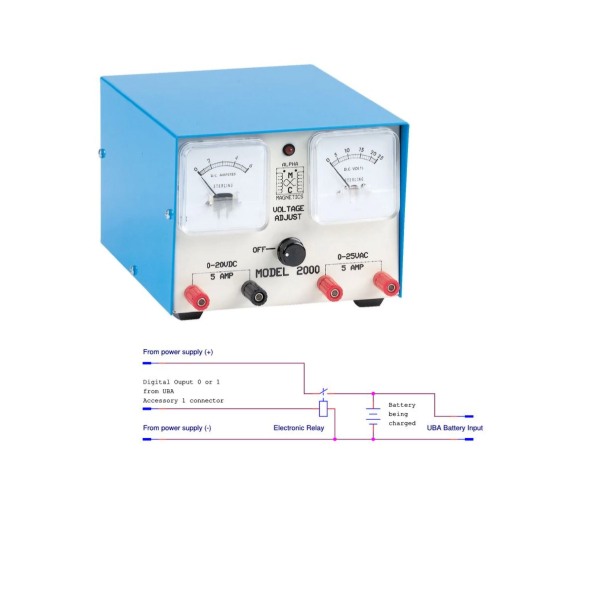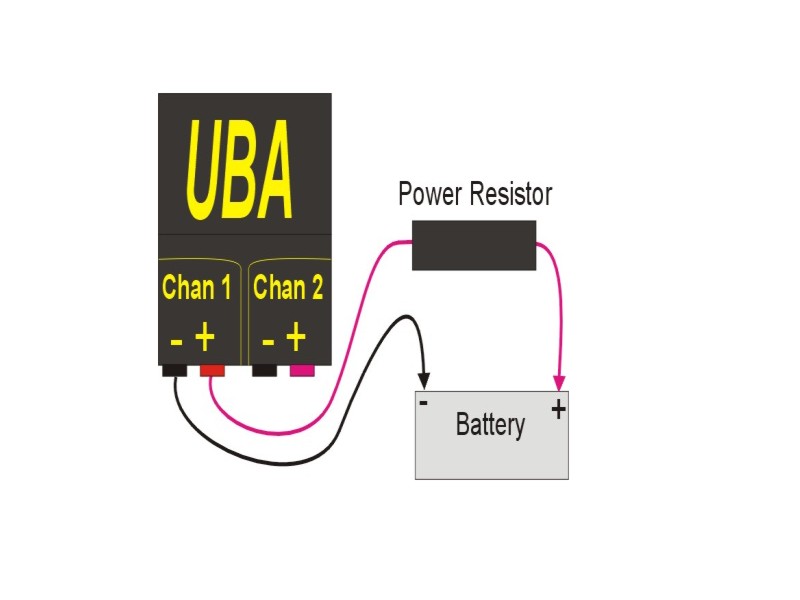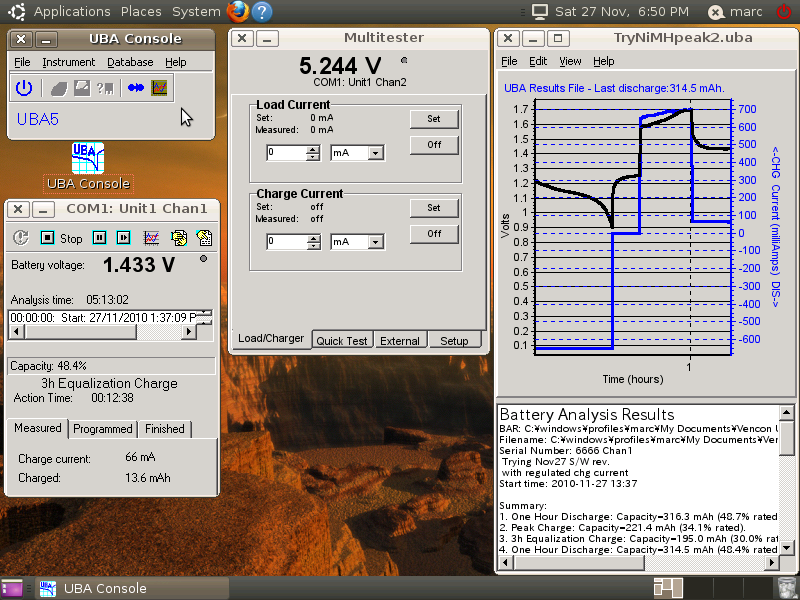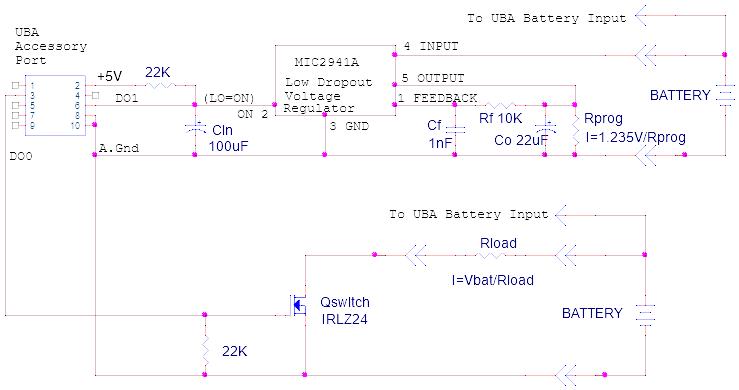UBA5-44V
Analyze batteries that are higher in voltage than the standard UBA5 as shown below:
| Chemistry | Maximum Battery Rated Voltage | Maximum Number of cells |
|---|---|---|
| Lithium Ion or Polymer | 37V | 10 |
| Lead Acid or Gel Cell | 36V | 18 |
| NiCd or NiMH | 30 | 25 |
UBA5-60V
Maximum input of 60V, can analyze high voltage battery packs, as follows:
| Chemistry | Maximum Battery Rated Voltage | Maximum Number of cells |
|---|---|---|
| Lithium Ion or Polymer | 51.8V | 14 |
| Lead Acid or Gel Cell | 48V | 24 |
| NiCd or NiMH | 43.2 | 36 |
UBA5-70V
We also have a 70V UBA5 for 16S li-poly batteries:
| Chemistry | Maximum Battery Rated Voltage | Maximum Number of cells |
|---|---|---|
| Lithium Ion or Polymer | 59.2V | 16 |
| Lead Acid or Gel Cell | 56V | 28 |
| NiCd or NiMH | 49.2 | 41 |
The UBA5-60V and UBA5-70V come a small power supply (120VAC or 220VAC input) that powers the UBA5’s internal circuitry. The maximum charge current is 2A per channel (up to the charge power supply’s limit) and the maximum load is 2.4A per channel with a 45W limit per channel. You can use the UBA channel combiner to charge at twice that.
The charge power supply, which we don’t supply, needs to be of sufficient voltage and current to charge your batteries. The UBA5 will regulate the charge current.
Here are some suggestions for lab grade power supplies:
Instek PSP-405: 40V 5A
Instek PSP-603: 60V 3.5A
Instek GPR-7550D: 75V 5A
Instek SPS-606: 60V 6A
When testing batteries that are higher than 15V the UBA5’s power limit becomes the limiting factor during battery discharge. For example, the maximum discharge current on a 30V battery would be 1.5A (45W). If you want a higher current for the discharge then see our section on High Power Solutions.

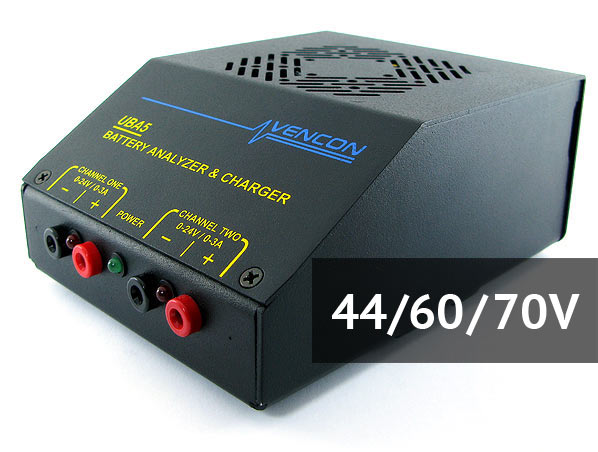
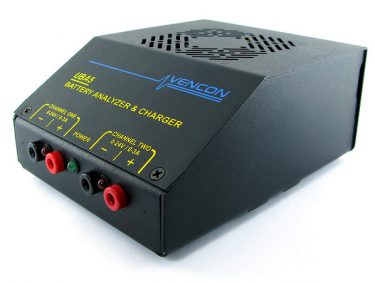
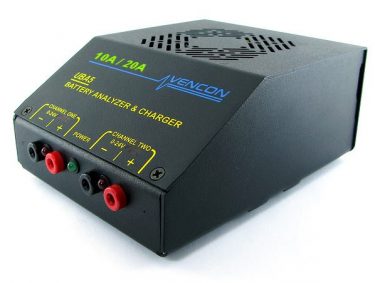
 Windows 10 Compatible
Windows 10 Compatible
